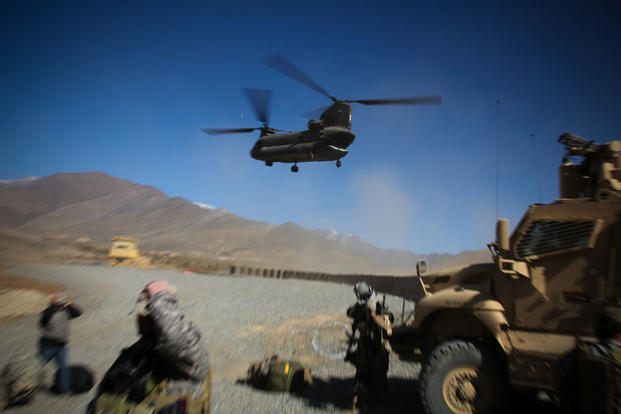The first Boeing CH-47, a 33,000lb machine powered by two 1,640shp Lycoming (now Honeywell) T55 engines, achieved first flight on Sept. 21, 1961.
Nearly 47 years and seven major upgrades later, the CH-47F and MH-47G has doubled in weight to 50,000lb, while the engine shaft horsepower rating has tripled with introduction of the 4,868shp T55-GA-714 powerplant.
With only 10% of the CH-47F delivered, however, Boeing is again proposing to radically increase the size of the airframe. The "growth Chinook" would be stretched and widened to accommodate and up-armored HMMWV (Humvee) inside the cabin. This would increase maximum takeoff weight to around 70,000lbs and demand a much larger engine. Honeywell has already proposed a roughly 6,000shp T55-GA-715.
It's still unclear what the army thinks about all this. After all, the army is planning to buy another 400 CH-47Fs. It's also still debating how much it needs a Joint Heavy Lift rotorcraft that would be more than twice the size of the CH-47F.
On top of all this, the army has also started a program to replace the venerable T55 with an all new engine in the 6,000shp to 7,000shp range after 2018. Last week, I confirmed that Honeywell, Pratt & Whitney and General Electric are each participating in the earliest stages of the Future Affordable Turbine Engine (FATE) program.
All this really means is that no one can predict the future of the army's heavylift rotorcraft needs after 2015, when the Future Combat System will allegedly be fielded. When the future of FCS is finally settled, the army will have a range of good options for a Chinook replacement.









